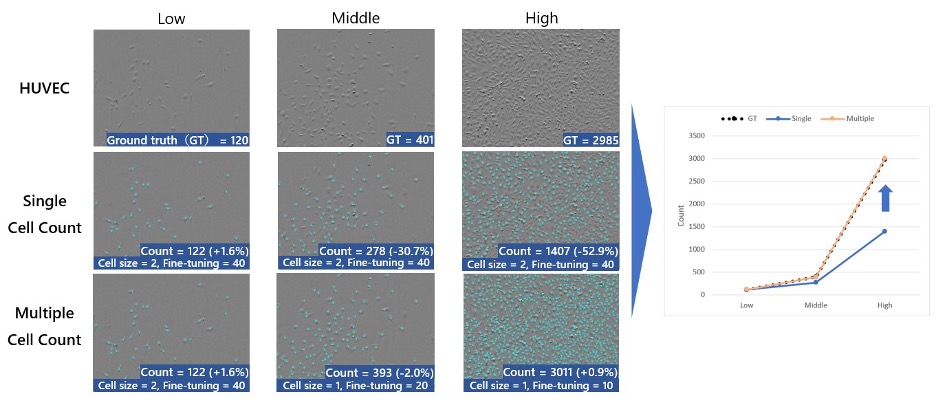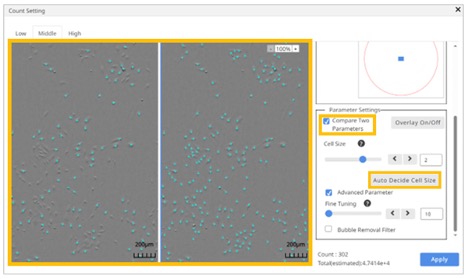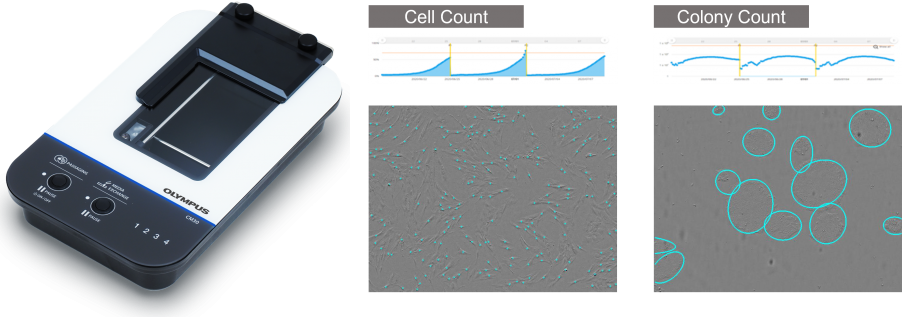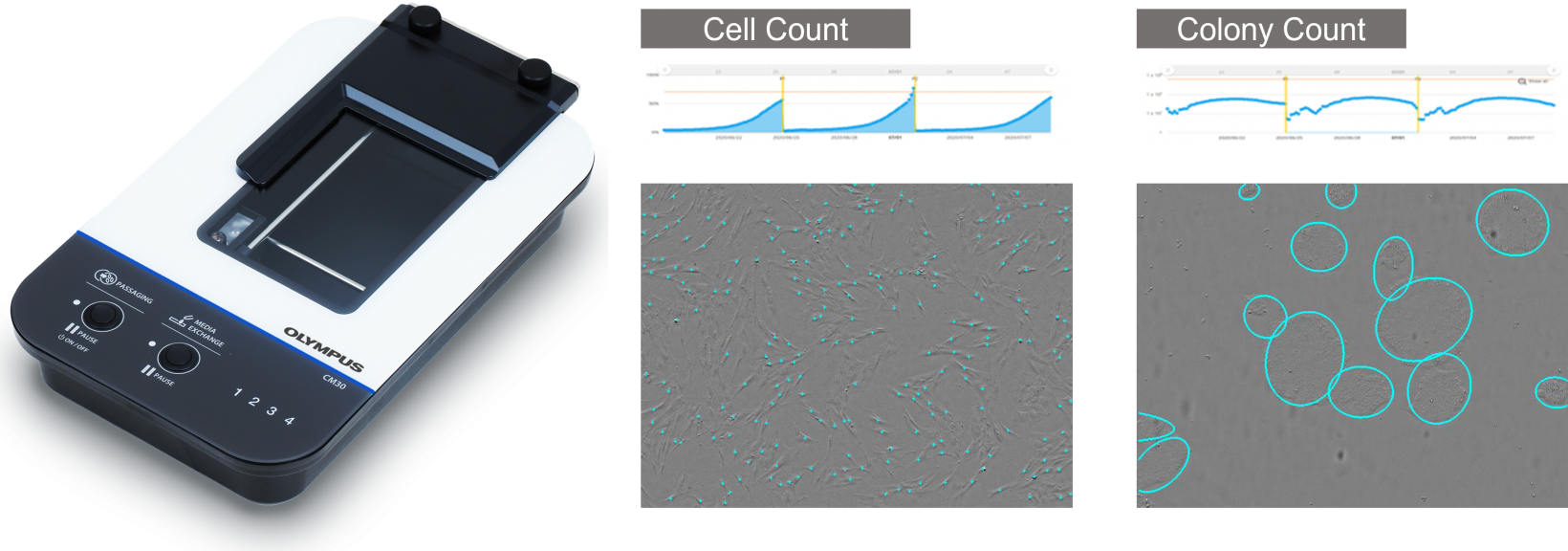One of the key objectives of incubation monitoring systems is to analyze confluency and cell/colony counts throughout the cell growth process. The ability to accurately and consistently measure these parameters is crucial for conducting reproducible experiments.
Here we highlight enhancements in our latest software update for the CM30 incubation monitoring system, which focuses on improving the usability and accuracy of our cell count process.
Get a More Accurate Analysis by Accounting for Cell Growth Changes
Adherent cells change their morphology during growth due to factors such as changes in confluency, cell differentiation, and passage number. In particular, as cell culture plates become more densely populated, cell size and organization will change. When creating an algorithm-based analysis, it’s important to incorporate these variations into the data to help ensure precise measurements.
CM30 software version 2.2.1 adds the ability to set analysis parameters for low, medium, and high cell confluency to cover the range of morphologies seen across cell densities. In our testing using a range of adherent cell types, this update enabled count accuracy within ±10% of the true cell quantities in each image regardless of cell density. This provides a robust and accurate analysis, even in the face of varying cell morphologies and densities within your culture.

The figure compares the analysis results of the single and multiple confluency-based cell count methods against ground truth (GT) in a total of seven HUVEC strains for evaluation. As the optimal cell count parameters may differ between low-density and high-density cells, the multiple confluency-based cell count has flexible parameter options to closely match the true value across the entire cell density range. To confirm the results, both the true value and ground truth were counted visually and manually.
Creating a More User-Friendly Process for Algorithm Adjustment
As a user setting up your algorithms, you need a simple process that enables you to easily understand how changes to the algorithm impact your analyses. Confidence in the results comes from knowing that you have correctly set up your parameters.
In CM30 software version 2.2.1, we have introduced some features to facilitate this process:
- Auto Decide Cell Size: This button estimates cell size and suggests parameters, providing a solid starting point for you to make fine adjustments as needed.
- Compare Two Parameters: Visualizing how your cells are being counted differently as you adjust parameters can be challenging. Our new feature presents side-by-side images and counts, enabling you to see qualitatively and quantitatively how your analysis changes as you adjust parameter settings.

CM30 software version 2.2.1 includes functions to compare parameters and automatically estimate cell size.
In summary, our updated CM30 software can improve your incubation monitoring by enhancing user experience and analysis accuracy. It adapts to diverse cell densities, and new user-friendly features simplify algorithm setup. For more details, contact us for a demo to experience the updated CM30 incubation monitoring system.
Related Content
Brochure: CM30 Incubation Monitoring System
Drug Efficacy Evaluation of 3D Cancer Spheroids Using an Imaging-Based Workflow


